Maybe you’re getting your child their first pet or perhaps you’re looking for multiple fish to fill a tank. Either way, there are plenty of small freshwater fish to choose from, with all sorts of colors, fin shapes, and sizes.
We’ll walk you through all kinds of freshwater fish from across the world. This list is in no particular order since we think all these fish deserve a fair chance at brightening up your work or living space.
Mollies: The Classic Aquarium Fish
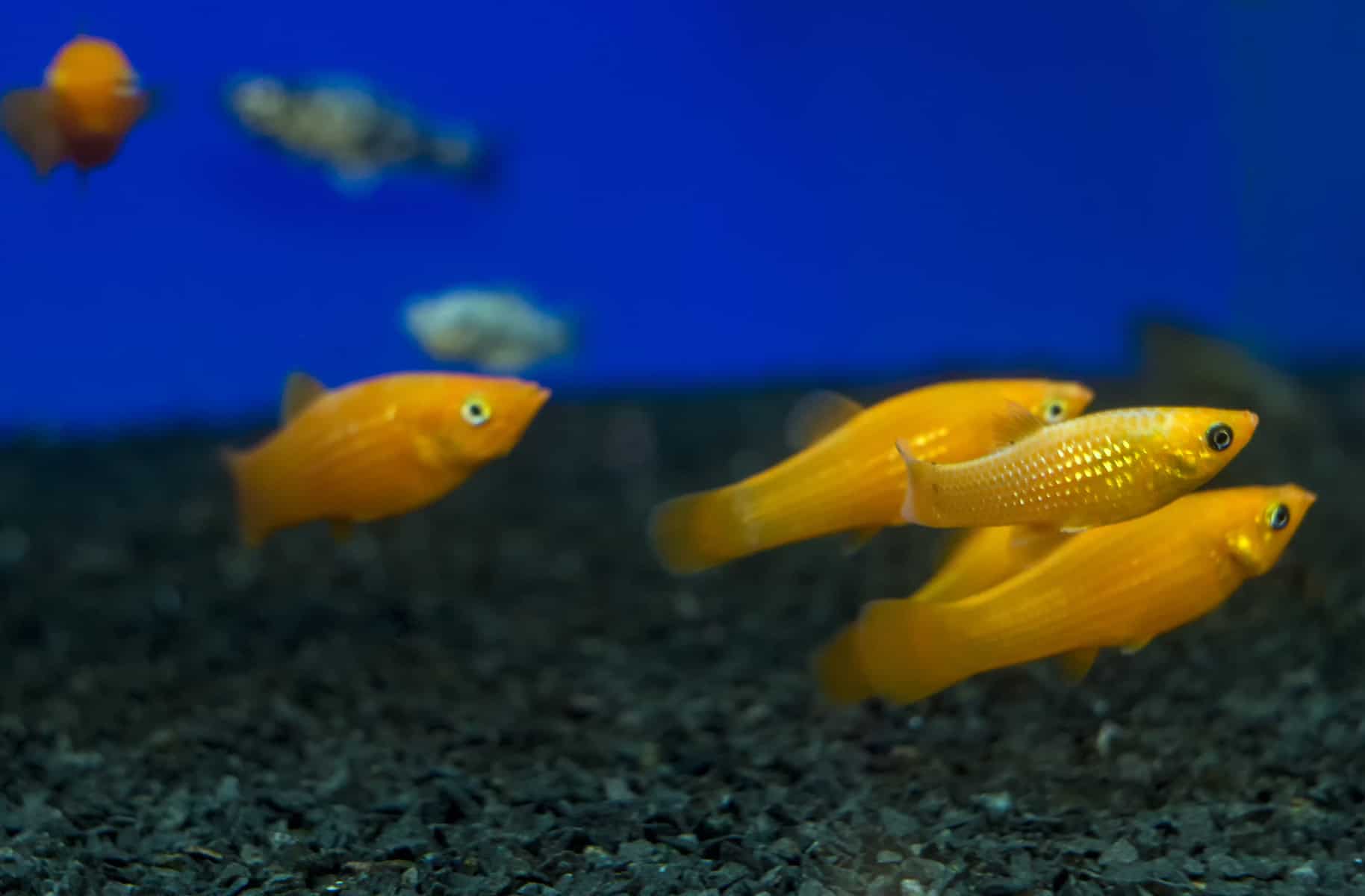
When you think of a classic fish tank, you might think of something like the molly fish that has been in the aquarium hobby for decades. These small fish come in a variety of colors and patterns and are very undemanding in regards to care.
They grow to about 3-4 inches (7.6-10.2 cm) long and are omnivores eager to eat anything they’re offered.
Be careful about keeping a male and female molly together in your tank because they like to breed multiple times. However, these fish are great to mix and match as long as they are kept in groups as they are a social species.
Betta Fish: The Kings and Queens of the Tank
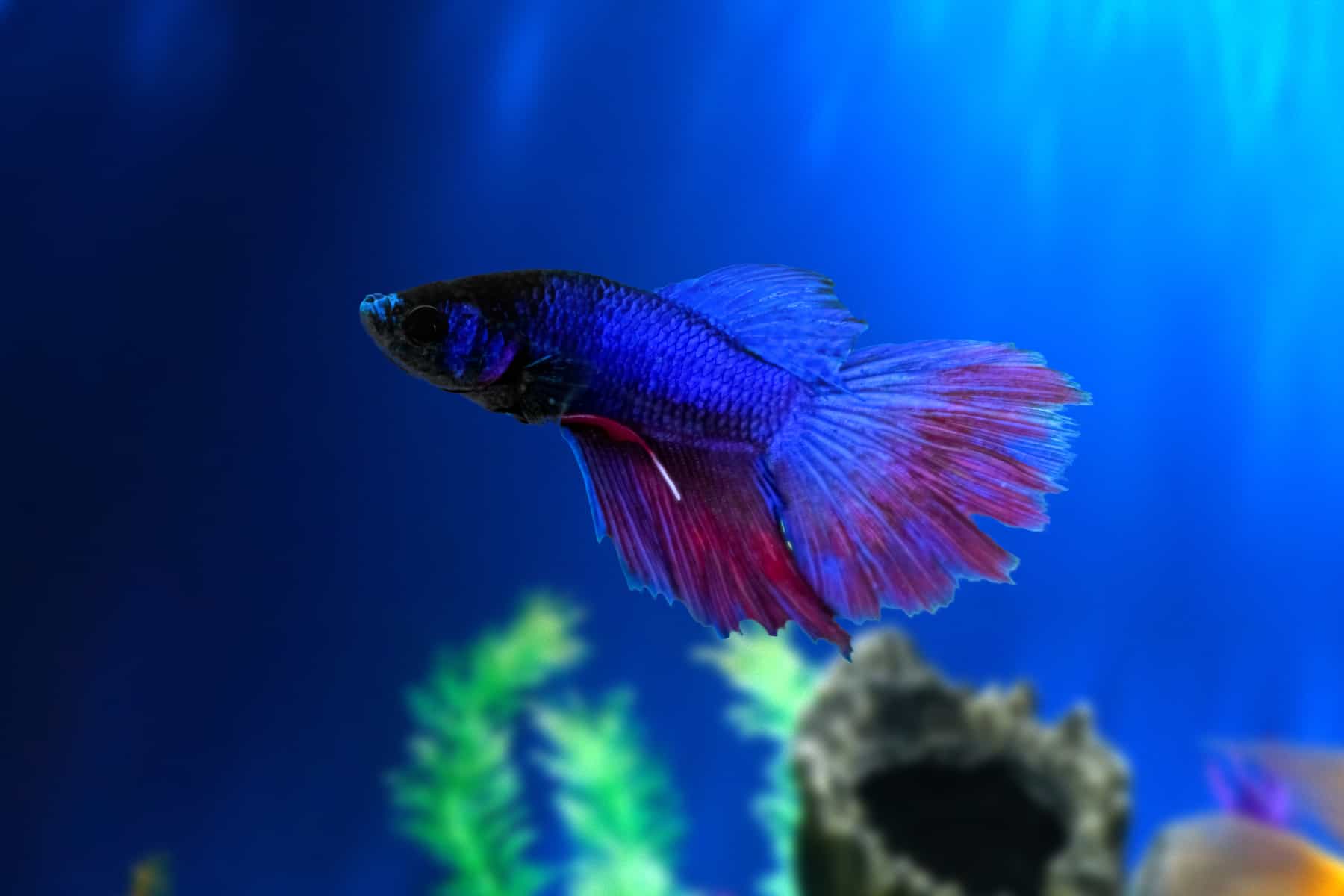
Betta fish are among the most beautiful of freshwater fish. Their fins wave through the water almost like the folds of a ballgown.
You most often see them in dark blues or purples, but they come in all sorts of colors. Their genes have been extensively researched and tested to find the most desirable combinations for color and appearance.
While betta fish are extravagant fish, males are territorial and aggressive with other fish. They prefer living in their own tanks with lots of plants. If your betta fish is peaceful, you can probably keep one or two other fish with them. However, this depends on the personality of the individual fish entirely.
What’s cool about the betta fish is they are labyrinth fish. That means they can breathe oxygen directly from the air or their gills. This ability has allowed them to temporarily survive in non-ideal water conditions in their Southeast Asian homes.
Betta fish usually eat insects and small crustaceans and live sometime between two to five years, though it is not unheard of for them to live much longer than that.
Goldfish: The Original Pet Fish
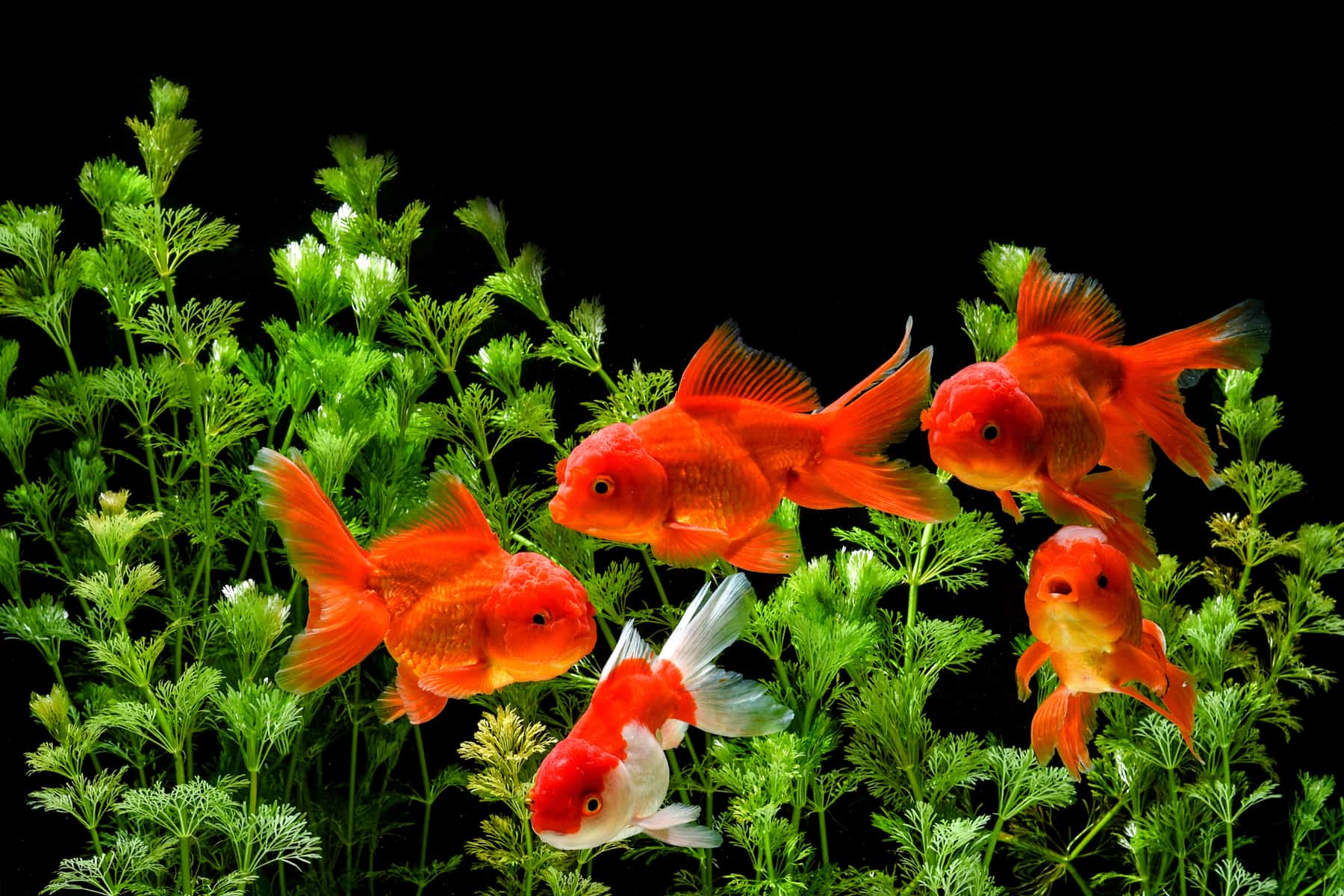
While a goldfish is as standard of a pet fish as they come, goldfish are a bit of a challenge to care for in the long-term. One goldfish needs at least 20 gallons (75.7 L) to itself with more needing considerable space.
To best take care of your goldfish, you’ll need to change their water weekly and keep on top of water filter maintenance. You might even need a water heater for more stability even though they are considered a coldwater species.
Despite their name, goldfish come in several different shapes and colors. Some fish have been bred to express peculiar features, like telescope eyes, which can interfere with your fish’s ability to swim.
Some goldfish can grow to be over two feet (61.0 cm) and live 20 or more years.
Zebra Danios: The Ultimate Schooling Fish
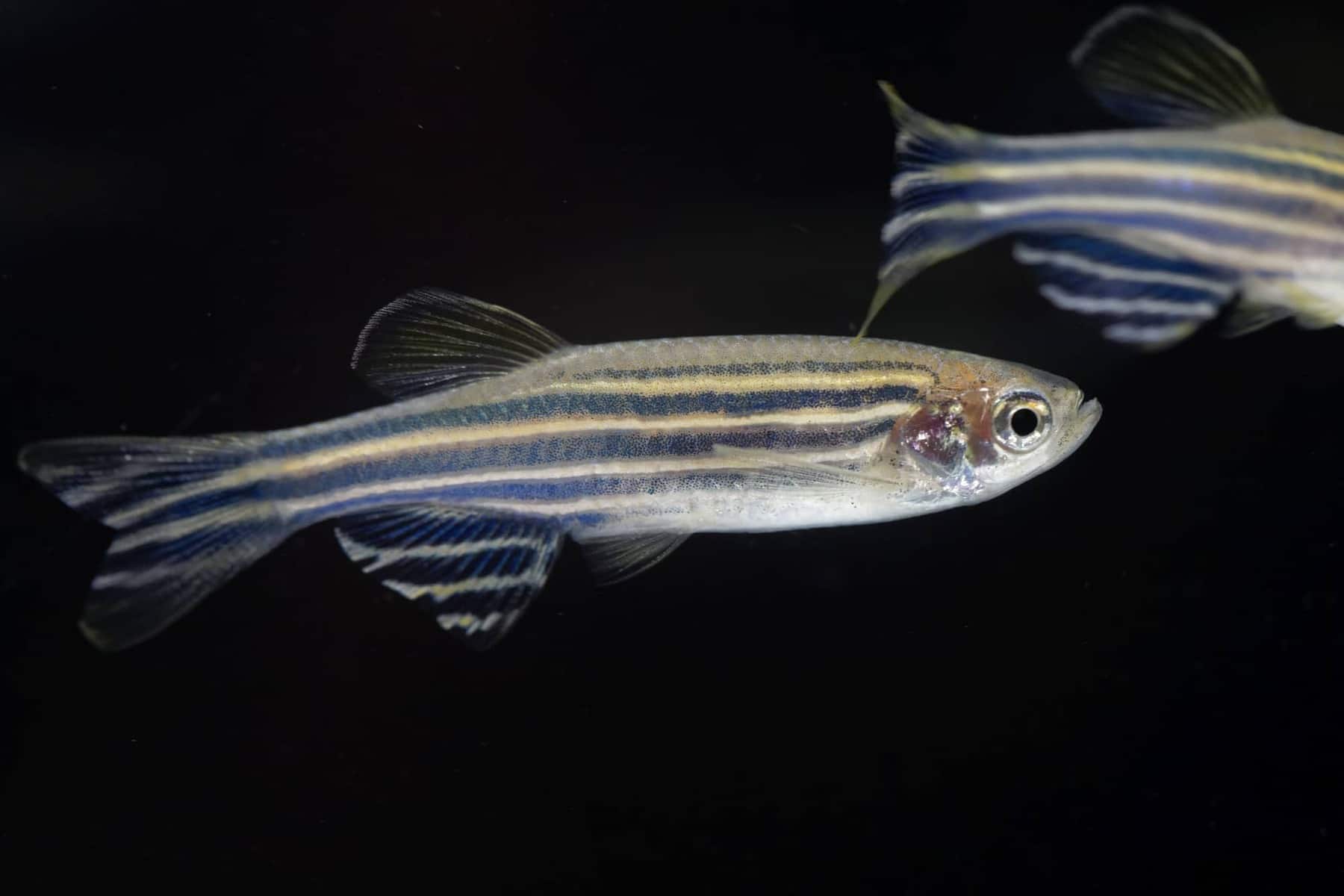
If you prefer to have a school of fish in your tank, the zebra danio is perfect, especially for a beginner. They are pretty small, growing only up to 2-3 inches (5.1-7.6 cm).
Keep in mind that zebra danios are schooling fish, so they prefer to be in groups of at least 6 or more, otherwise, they get stressed. Nonetheless, they are peaceful, easy-going fish that will bring movement and excitement to the upper water column.
In a funny little twist, zebra danios are notorious jumpers. If given a chance, they might leap out of your tank, so keep it covered at all times with a tight fitting aquarium hood.
Like mollies, zebra danios are omnivorous, so they eat things like small crustaceans, worms, and other insects. To help your fish get some variety into their diets, supplement live, frozen, and freeze-dried foods, like brine shrimp and bloodworms, into their regular fish flake or pellet food.
Guppies: Also Known as the Millionfish
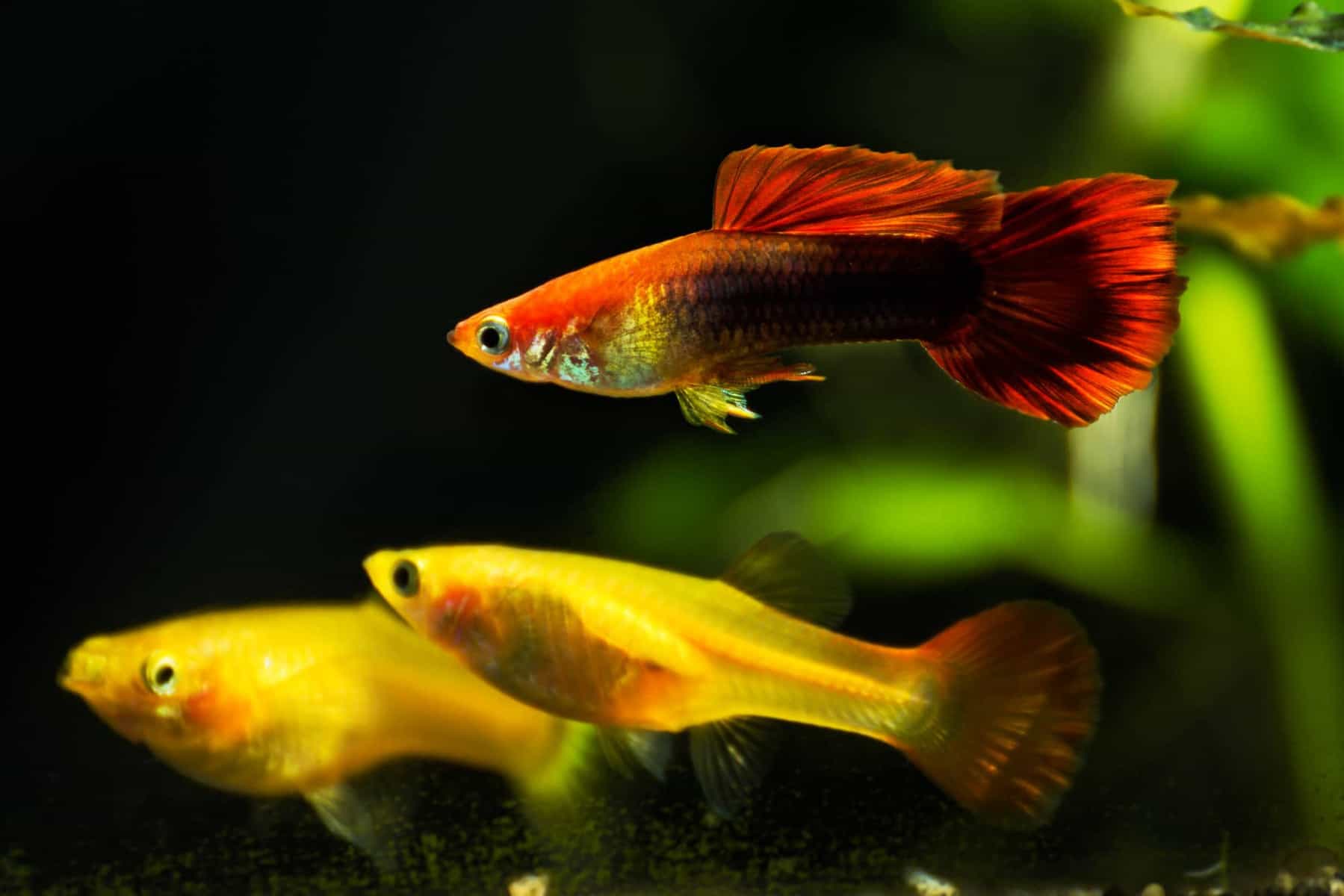
Guppies are lively, colorful fish that are perfect for beginner hobbyists. As long as you keep genders separated, you should not have an unexpected influx of guppy babies as they love to breed and can quickly take over an aquarium.
Males tend to be livelier than females, especially during mating season. You might see them wiggling their fins, trying to impress females since males have much more colorful fins.
On top of being quite active fish, guppies come in so many colors that one guppy will never look exactly like another. They can adapt to many different water conditions, too, though you want to keep the water parameters, including temperature, consistent.
You’ll also need at least a 10-gallon (37.9 L) tank since guppies are constantly moving and prefer to move in groups; some hobbyists can make 5 gallons (18.9 L) work for a trio, but water conditions need to be excellent. For these smaller tanks, fry populations also need to be constantly monitored to prevent overcrowding.
Guppies tend to hang around toward the top or middle of the tank. They especially like lots of plant life to swim around, so some guppy grass could really make them feel secure in their home.
On the other hand, if your guppies are always hiding, it might indicate they’re stressed or sick. Once they’re active again, feel free to add other peaceful fish to their tank, though it might be best to pair them with at least a few other guppies.
In terms of diet, make sure you change things up from time to time. That means a combination of flake food, live food, and vegetables.
Angelfish: Angelic Beauties

One of the largest freshwater fish on this list, the angelfish can grow up to 6 inches (15.2 cm) in length and 8 inches (20.3 cm) tall. Though they are pretty lovely fish with graceful swimming patterns and lots of colors and patterns, they are a touch aggressive, though not as much as betta fish.
Also, like many fish on this list, they are omnivorous, eating small insects, shrimp, and plants. Thanks to their large size, you’ll want to keep them away from smaller fish that could fit into their mouths.
You’ll often find wild angelfish in quiet, slow-moving water. You can recreate that environment in a fish tank with lots of driftwood, overhanging plants, and minimal water flow.
Ensure the tank is tall (to accommodate their body shape), warmed with an aquarium heater, and can hold at least 55 gallons (208.2 L).
Platies: The Get-Along Fish
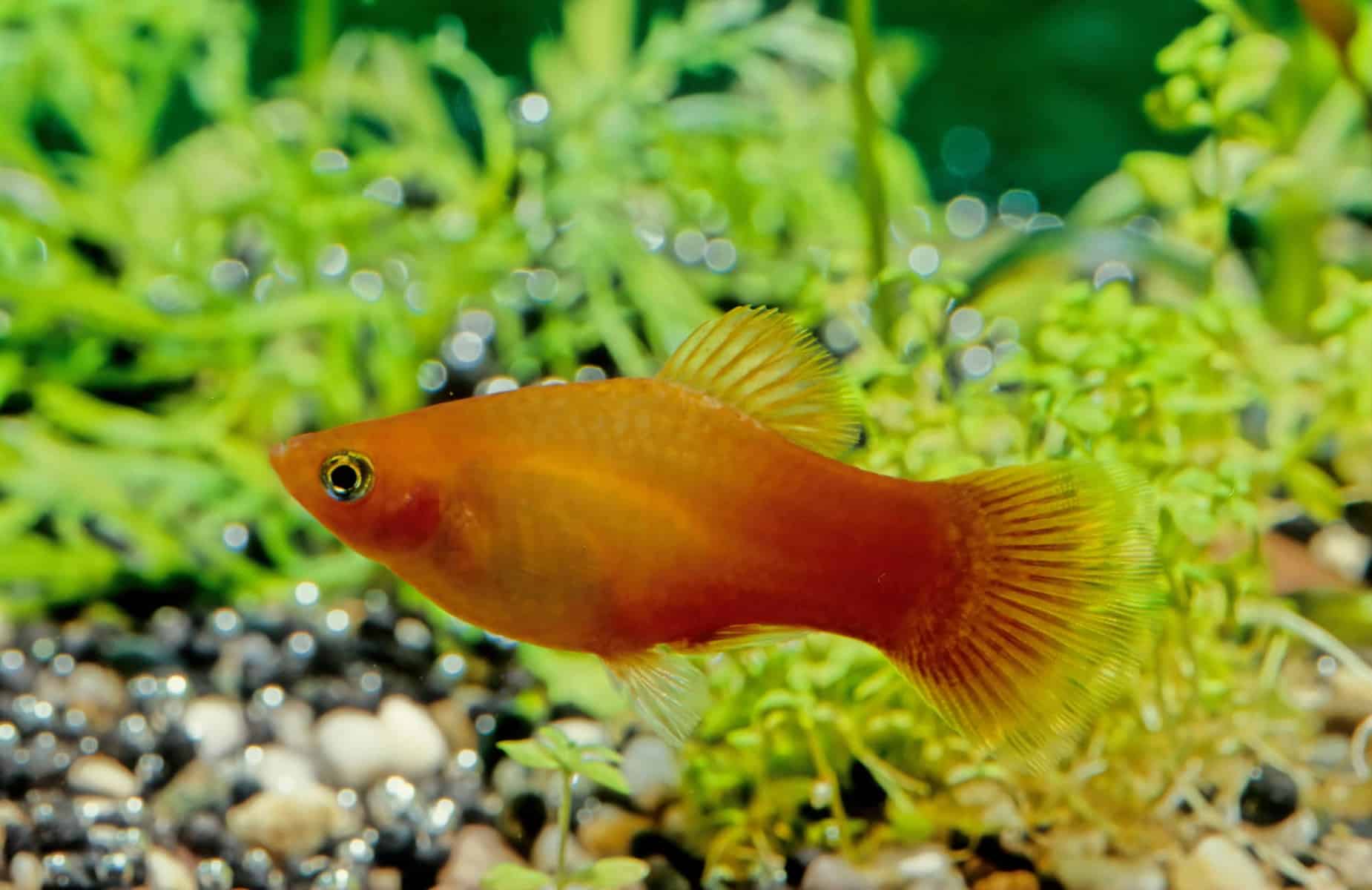
The platyfish combines some of the best qualities we’ve seen so far. They thrive well in communities and are relatively peaceful fish, especially with guppies or mollies.
They also come in lovely colors, which make them extremely popular in the home aquarium world. Although they’re lively fish, they do not live too long: only about 3 or 5 years.
Their diet, while omnivorous, does require plant- and protein-based foods. They can eat meat-based foods too, though vegetables should make up the majority of their diet.
Though platies aren’t seen as schooling fish, they do prefer to be in small groups. It is recommended to keep at least three platies together at a time.
Although platies are usually peaceful fish, males can overwhelm females if you don’t keep the proper ratio. You should always keep more females than males, so they don’t get tired from the males chasing them.
Male and female platies can be difficult to tell apart, so it might be worthwhile going to a breeder that is able to separate them so you don’t end up with a tank full of platies after a couple of months.
They might also jump out of the tank if given a chance, so always keep a tight lid on the tank. Platies are pretty tough fish that can tolerate varying water conditions.
Still, you’ll want to change about 25% of the aquarium water every two weeks and have lots of plants and substrate in their tank. A tank of at least 10 gallons (37.9 L) should do fine for a small group of platies.
White Cloud Mountain Minnow: Bred for Food, but Beautiful
Aquarists usually breed white cloud mountain minnows as food for other fish. Still, they look quite lovely when they swim as a group at the top of the aquarium.
White cloud mountain minnows can be silvery blue or a beautiful golden with a bright red caudal fin. They tend to live in colder water, where they are a lot healthier and more active. This means they are not compatible with many of the tropical species on this list.
White cloud mountain minnows are easy to care for, luckily. You won’t find too many of them in the wild because of tourism and pollution, and you’ll have to be careful where you get your minnows since they are prone to physical deformities and disease.
They are also shoaling fish, which means they much prefer to be in groups, so we recommend keeping at least 5 to 6 minnows to a group. You can keep them in a tank with other fish, as long as the fish are not large enough to eat them and temperature requirements are met.
If you’re interested in breeding fish, the white cloud mountain minnow might be a good start. You can place the most colorful minnows in a small tank with a spawning mop, and soon, the fish will start dropping their eggs on the tank’s vegetation.
Luckily, you can leave the parents in the tank since they usually don’t eat their eggs, which should start hatching within 48 to 60 hours.
Celestial Pearl Danio: Fish of the Sun and Stars
The celestial pearl danio is perhaps the most recently discovered fish on this list: found only in 2006. Its bright colors and small size make it a popular freshwater aquarium fish. Males tend to have brighter, more prominent colors than females and fully display these colors when courting.
In an aquarium, the celestial pearl danio does not require a lot of space since they are not very active swimmers. These fish do best in schools of 5 or more, so you will need to allow for a larger bioload.
In this group, you will only want to keep one male in order to lessen aggression. They do best in a specific-only or biotope setup and shouldn’t be kept with larger fish.
You’ll also need lots of plant life, like waterweed and java moss, for the fish to hide behind. Celestial Pearl Danios also like slightly higher acidic water and a well-lit tank.
Scarlet Badis: The Fiery Redhead of the Aquatic World
As its name indicates, you’ll usually find the scarlet badis in either orange or red, along with a few dark vertical stripes. You might also find neon blue accents on their dorsal fins.
Do note that the scarlet badis’s diet is high in protein. They like to scavenge for crustaceans, insect larvae, and other protein sources in the wild, but you can feed them both frozen and live food in an aquarium as a substitute.
As long as they get plenty of live protein (fish flakes won’t cut it for them), they can live peacefully with a select few other fish. Although they grow less than 1 inch long (2.5 cm), they are capable hunters.
In a fish tank, make sure you have enough plant life to keep the fish separate, especially if you have multiple males. You can use coconut shells or driftwood to establish boundaries better and give them places to hide.
Rainbowfish: The Best Fish for a Rainy Day
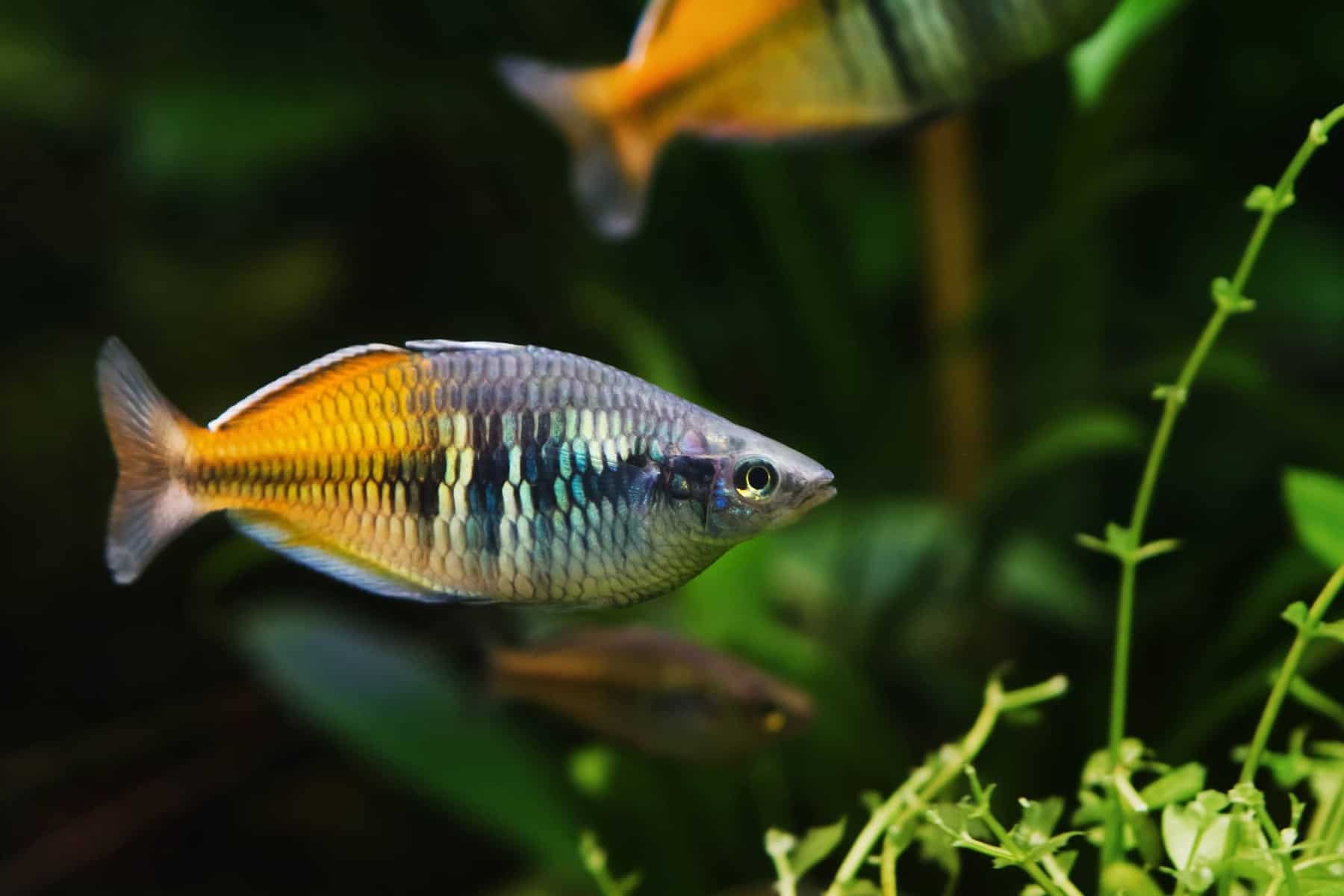
Whenever you need a pop of color, the rainbowfish is there to help. Even though their rainbow colors don’t come in till they reach maturity, they’re pretty easy to care for in the meantime.
They are a less common freshwater fish, so you might surprise a few people by having one in your home. Fortunately, rainbowfish get along pretty well with other fish, even if they’re a little shy to start.
They’re also pretty active fish, so you might need a 30-gallon tank at the least for the smaller species. That means plenty of open space to swim, but also enough room for a plant or two.
Neon Tetra: The Sometimes Invisible Fish
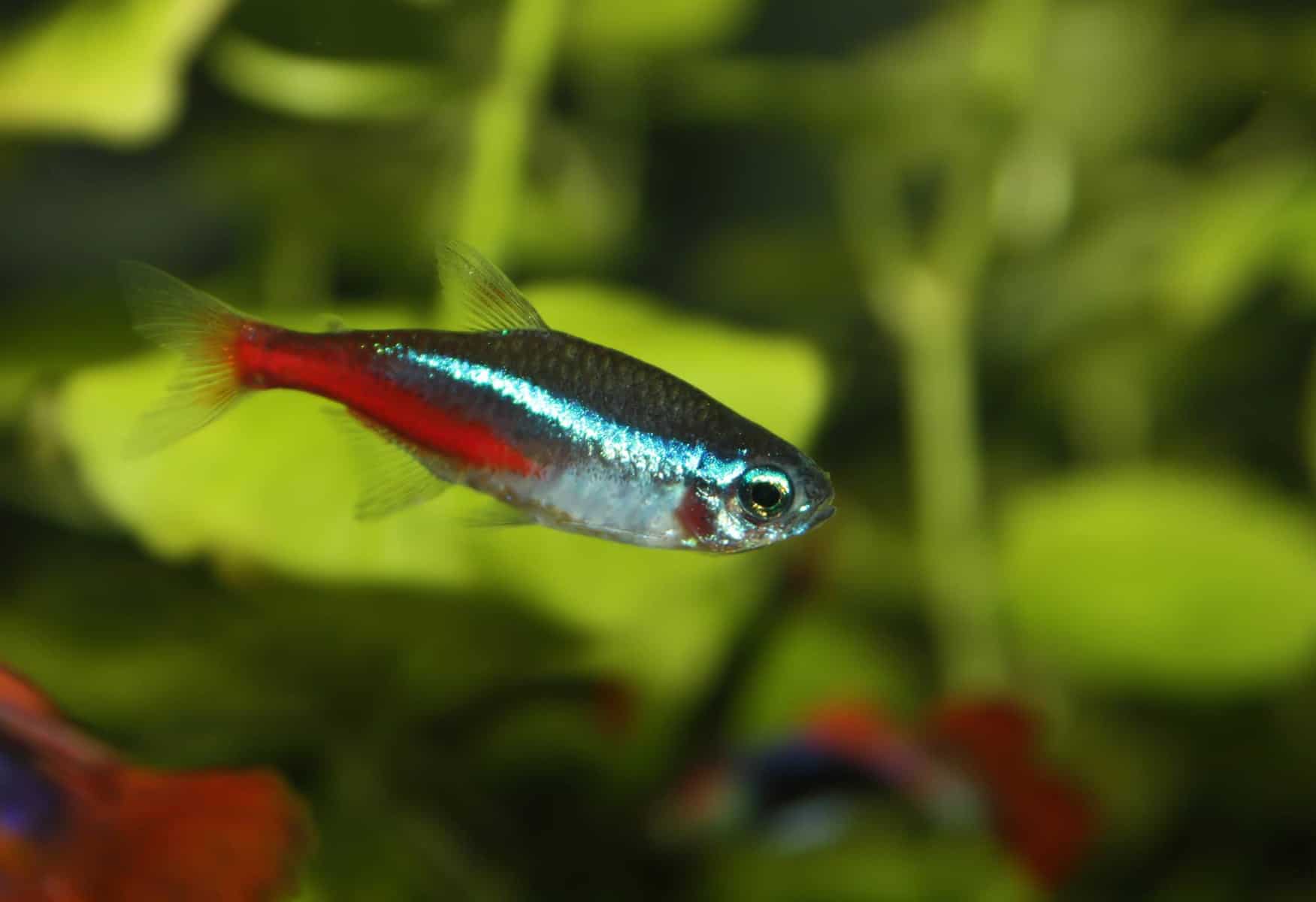
If you don’t see yourself caring for a high-maintenance goldfish, you can try a tropical neon tetra instead.
For one thing, they don’t grow very much: only about 1 inch long (2.5 cm) long. You also don’t have to feed them any special food or set up a special aquarium.
They’re a very peaceful species that do well in groups of at least 5 or more, especially in tanks where they can mingle in the plant life. However, you might still be able to see them, thanks to the bright red stripe going down their silver and blue bodies.
Be sure to keep at least a few in your tank since they get stressed without a group. Also, make sure you house them with other non-aggressive fish that are not big enough to eat them.
Sometimes, you might notice the neon tetra’s blue and red coloring begin to fade. This only happens when the fish gets sick, when they sleep, or when they feel threatened. If you notice this happening to your fish, check water parameters immediately and observe signs of aggression.
Losing their color allows them to hide from predators better. Their colors also help you distinguish between males and females: males tend to be brighter.
Speaking of hiding, you’ll want to create the neon tetra’s South American environment with lots of plants and driftwood; tannins are strongly recommended but not required.
Cardinal Tetra: The Neon Tetra’s Brighter Cousin
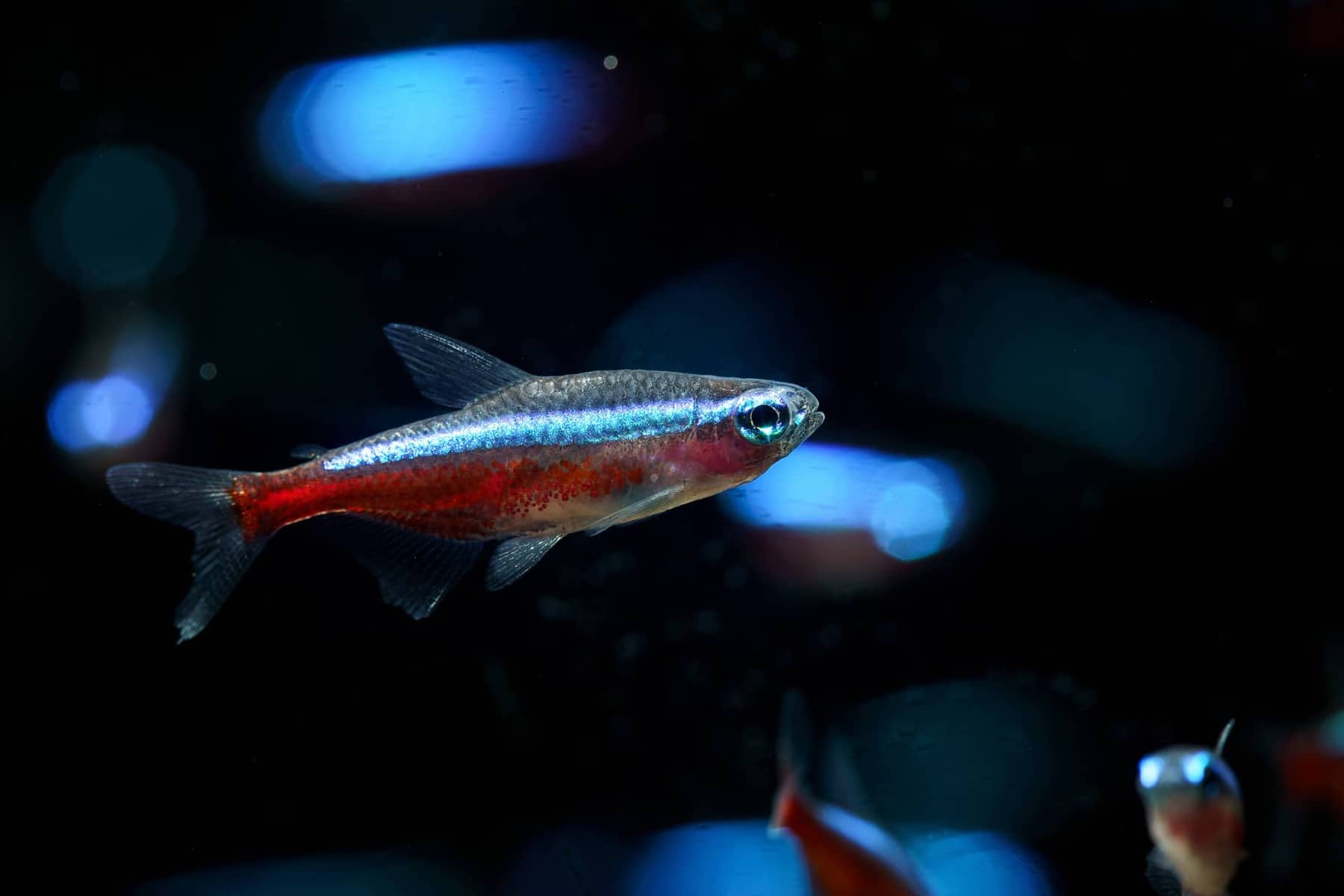
The cardinal tetra is not very different from their neon cousin. Their colorization is similar, except for a much longer, larger, and bolder red stripe (hence “cardinal” in their name).
Until recently, the cardinal tetra was not as widespread as the neon tetra because they were more challenging to breed in captivity. Cardinals also seem to grow larger in captivity than in the wild.
They prefer to stay in larger groups and move around the tank as a single unit, though they will spread out over time if comfortable. Sometimes you may see a single fish wandering from the group, but they’ll always eventually return to the school.
If you ever see a cardinal tetra leave the group, they may go to hide behind a plant, some driftwood, or a rock cave in the tank. These fish like warmer water that’s slightly more acidic than usual.
The cardinal tetra can grow up to 2 inches (5.1 cm). In that case, they require a larger tank for best comfort: 15 to 20 gallons (56.8-75.7 L) at least.
Peacock Gudgeon: A Peacock Fish Indeed
Peacock gudgeons are lively and colorful fish, known for their goby-like appearance and bright peacock colors. Their colors vary, though most have a pretty blue base color covered in red stripes.
They’re a bit of a larger fish, growing up to 3 inches (7.6 cm).
Luckily, peacock gudgeons work well in groups, get along well with other fish, and are easy to care for. They do especially well in biotope setups.
Keep in mind that they are a little picky about food, which they prefer to be live or frozen. You’ll need things rich in protein, like bloodworms or brine shrimp.
You’ll find several differences between male and female peacock gudgeons, namely the males having brighter colors and being generally larger than females. Males may be slightly more territorial toward other males, but they are peaceful on the whole.
In terms of how they live, keep the lighting low, and provide several places to hide. Gudgeons are, oddly enough, more active when they have more places to hide or swim around.
If you’re comfortable with your peacock gudgeons spawning, make sure you have a small piece of PVC pipe or rock cave for the male to build a nest.
Apistogramma: Also Known as the Dwarf Cichlid
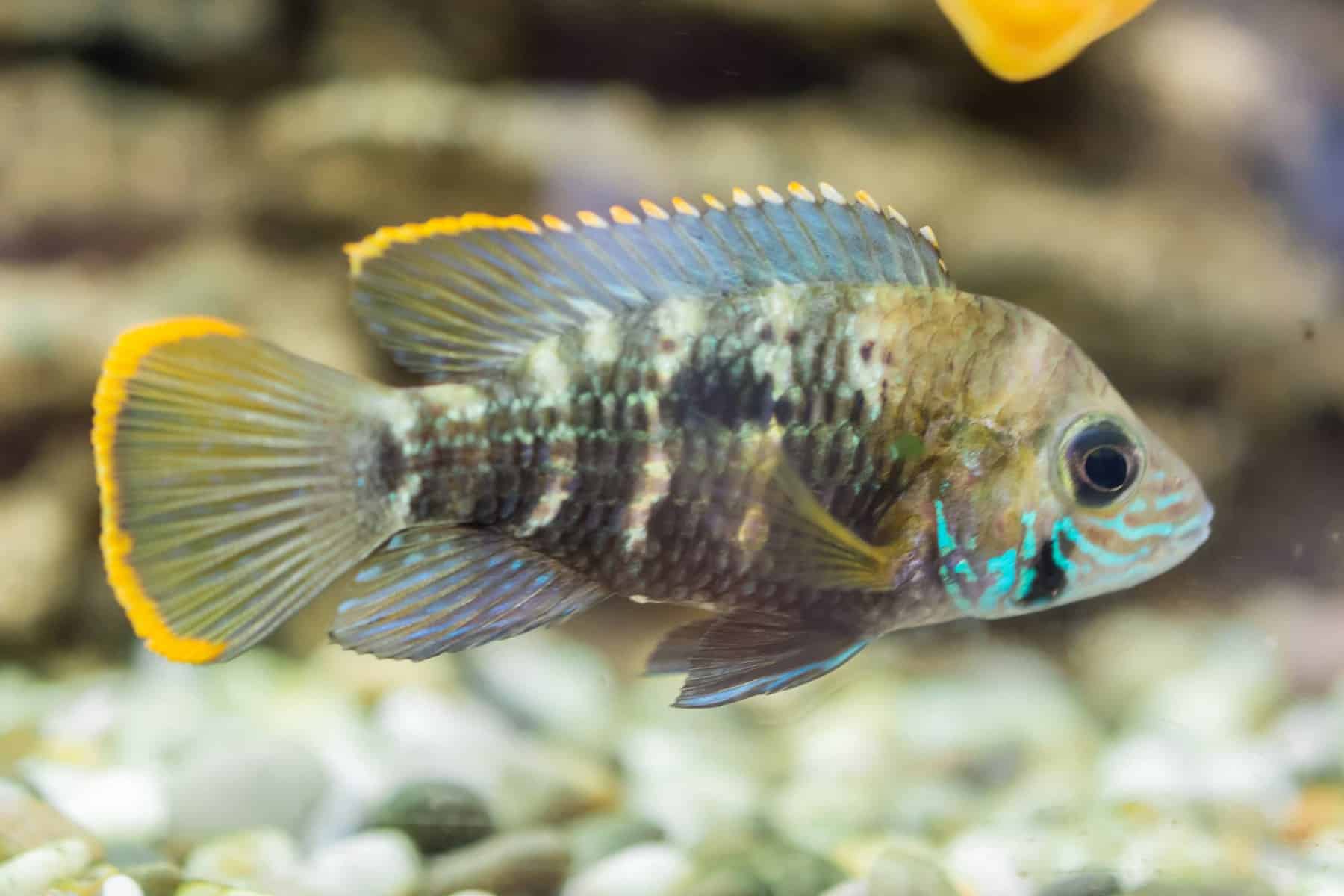
Members of the Apistogramma genus don’t have the same temperament as their larger relatives. Instead, they are peaceful fish that will get along fine with non-aggressive fish.
Apistogramma fish tend to spend time closer to the substrate, so if you have fish that stick to the surface, all the fish should get along fine and not bother each other.
You’ll see species of Apistogramma in plenty of colors. People are discovering more and more varieties of Apistogramma all the time with different dorsal fin shapes too.
Conclusion
There are several varieties of the species listed here, but they all have one thing in common. They need tender care, special food, and freshwater to stay alive and well. Any one of these will make an excellent friend for your home or workplace.


